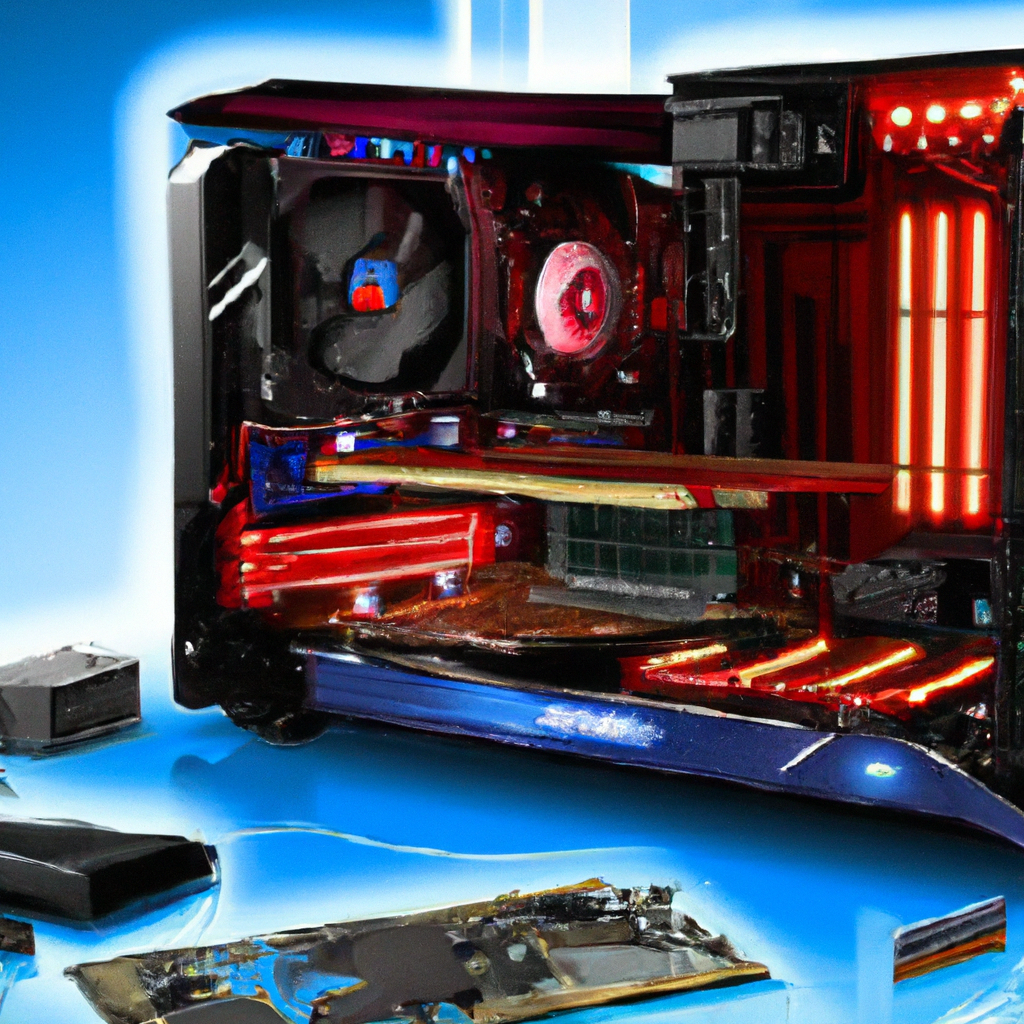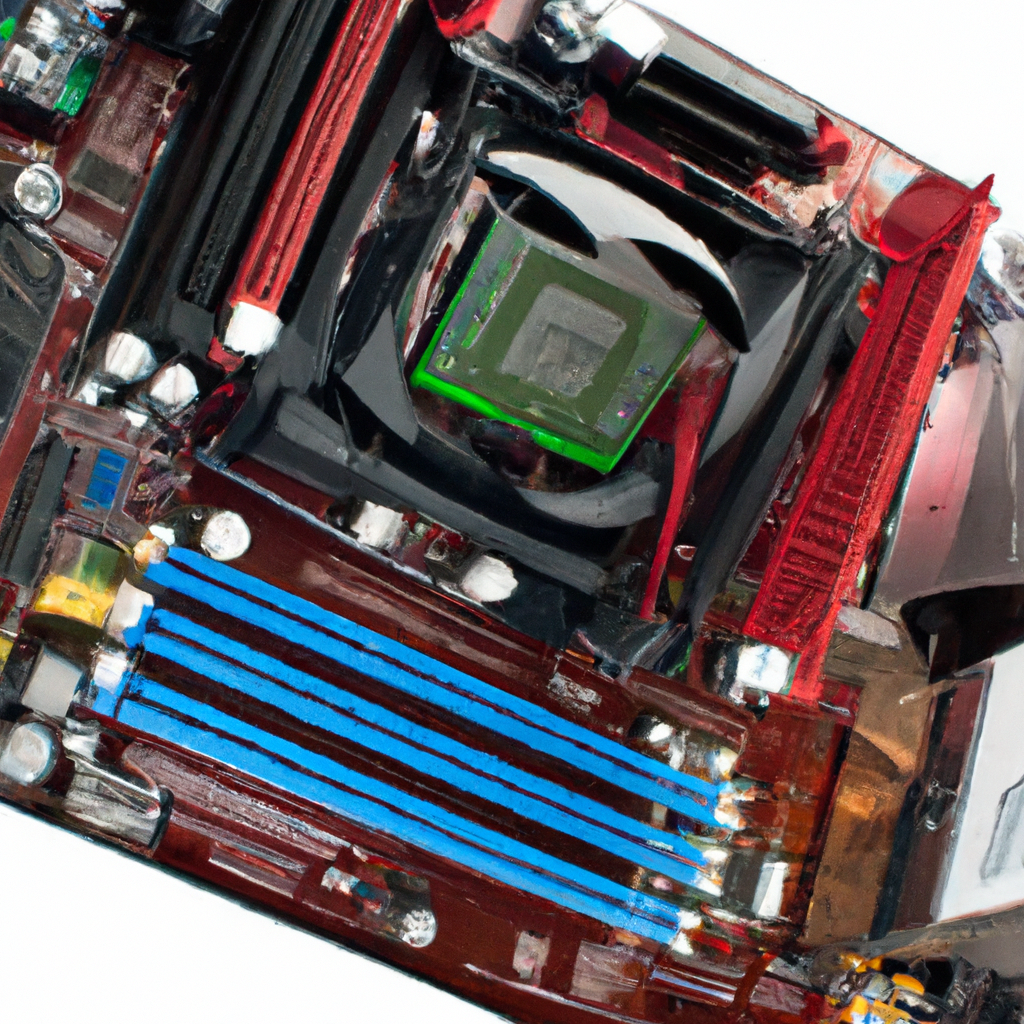How Do I Update BIOS For Improved Gaming Performance? 7 Useful Tips
How Do I Update BIOS For Improved Gaming Performance: An Introduction
Gaming Experience Enhancement
If you’re a passionate gamer looking for ways to level up your gaming experience, you may have considered various hardware and software tweaks. Yet, one of the often overlooked methods for enhancing your gaming system’s performance is updating your BIOS.
Importance of BIOS
BIOS, or Basic Input/Output System, is the firmware that initializes your computer’s hardware components during the startup process. An outdated BIOS may not support newer components or features, potentially bottlenecking your system’s performance. This is especially critical for gamers, where even small performance gains can make a noticeable difference.
Scope of the Article
In this comprehensive guide, we’ll walk you through the process of updating your BIOS to ensure you’re leveraging the full potential of your gaming rig. We’ll cover the steps involved, the precautions you should take, and the benefits you can expect.
Unleashing Full Potential
By following our step-by-step guide, you’ll be equipped to maximize your hardware’s capabilities, potentially unlocking features or improvements that can significantly elevate your gaming performance.
Get Ready
So, whether you’re trying to get those extra frames per second or ensuring that your system remains stable under heavy gaming loads, grab your controller and let’s delve into how updating your BIOS can give you that competitive edge.
How Do I Update BIOS For Improved Gaming Performance:
Checking Compatibility
Identify your motherboard model
Before updating your BIOS, it is important to identify your motherboard model. This information can usually be found by checking the documentation that accompanies your computer or by looking inside your computer case. Additionally, you can use system information utilities or third-party software to identify your motherboard model. By knowing your motherboard model, you will be able to download the correct BIOS update for your specific hardware.
Check the manufacturer’s website
Once you have identified your motherboard model, the next step is to visit the manufacturer’s website. The website will typically have a support or downloads section where you can find the latest BIOS updates for your motherboard model. It is always recommended to download BIOS updates directly from the manufacturer’s website to ensure authenticity and avoid potential security risks.
Ensure compatibility with your operating system
Before downloading and installing a BIOS update, it is crucial to check if the update is compatible with your operating system. Manufacturers often release BIOS updates that are specifically designed for certain operating systems, so it is important to ensure compatibility to avoid any potential issues. The manufacturer’s website will provide information on supported operating systems for each BIOS update. Make sure to carefully review this information before proceeding with the update.
How Do I Update BIOS For Improved Gaming Performance: Backing Up Data
Importance of backing up
Updating the BIOS involves making changes to the firmware of your computer’s motherboard, which can carry some risks. It is therefore highly recommended to back up your important data before proceeding with the update. Backing up your data ensures that even in the unlikely event of a problem occurring during the update, you won’t lose any valuable files or documents.
Backup methods
There are several methods you can use to back up your data. One option is to manually copy your important files onto an external storage device, such as a USB flash drive or an external hard drive. Alternatively, you can use backup software that automates the process and creates a complete system backup. There are many reputable backup software options available, both free and paid, that offer a range of features and customization options.

Downloading the BIOS Update
Finding the latest BIOS version
To download the latest BIOS update for your motherboard, you will need to visit the manufacturer’s website and navigate to the support or downloads section. Look for the section specifically related to BIOS or firmware updates. Here, you will typically find a list of available BIOS updates for different motherboard models. Locate your motherboard model and check for the latest version listed. Download the BIOS update file to a location on your computer where you can easily access it later.
Choosing the update method
When it comes to updating the BIOS, there are different methods available depending on your motherboard and the manufacturer’s specifications. The most common methods include updating through a USB drive, using Windows-based utilities, or updating through the BIOS setup itself. Before proceeding with the update, it is essential to carefully read the instructions provided by the manufacturer to ensure you choose the correct update method for your specific motherboard model.
Preparing for Installation
Understand the installation process
Before initiating the BIOS update, it is important to have a clear understanding of the installation process. Familiarize yourself with the steps involved, such as entering the BIOS setup, locating the update utility, and following any specific instructions provided by the manufacturer. It is always recommended to carefully read the documentation or user manual that accompanies your motherboard to ensure a smooth and successful installation process.
Update prerequisites
Some BIOS updates may require certain prerequisites to be met before the update can be installed. These prerequisites can vary depending on the update and the specific motherboard model. Common prerequisites may include having a minimum battery charge level if you are updating a laptop, connecting your computer to a stable power source, or disabling any antivirus software that may interfere with the update process. Make sure to review the prerequisites provided by the manufacturer and follow them accordingly.
Closing unnecessary applications
Before starting the BIOS update process, it is advisable to close any unnecessary applications running on your computer. This will help minimize any potential conflicts or interruptions during the update. Close any applications running in the background, such as antivirus software, system monitoring tools, or any resource-intensive programs. By freeing up system resources, you can ensure a smoother update process and reduce the risk of encountering any issues.

How Do I Update BIOS For Improved Gaming Performance: Updating BIOS
Recommended BIOS update methods
Different manufacturers may have specific recommendations for updating the BIOS, so it is important to follow the instructions provided by the manufacturer of your motherboard. However, there are some common BIOS update methods that are widely used and recommended.
Updating through a USB drive
One of the most common methods for updating the BIOS is using a USB drive. This method involves transferring the BIOS update file to a USB drive and then booting into the BIOS setup to initiate the update process. The specific steps for updating via a USB drive may vary depending on your motherboard model. In general, you will need to enter the BIOS setup, locate the option for updating the BIOS, select the update file from the USB drive, and follow the on-screen prompts to complete the update.
Using Windows-based utilities
Some motherboard manufacturers provide Windows-based utilities that simplify the process of updating the BIOS. These utilities typically come in the form of executable files that can be run directly from within the Windows operating system. They often provide a user-friendly interface that guides you through the update process step by step. Before using a Windows-based utility, make sure to carefully read the instructions provided by the manufacturer to ensure a successful update.
Updating through the BIOS setup
If your motherboard supports it, you may also have the option to update the BIOS directly from within the BIOS setup itself. This method usually involves downloading the BIOS update file, saving it to a USB drive, and then selecting the update option from the BIOS setup menu. The specific steps for updating through the BIOS setup will vary depending on your motherboard model. Consult the documentation or user manual for your motherboard for detailed instructions on how to proceed with this method.
Installation Troubleshooting
Common issues during installation
While updating the BIOS is generally a smooth process, there can be certain issues that may arise during installation. Some common issues include the update process freezing or hanging, encountering an error message, or the computer failing to boot after the update. These issues can be frustrating, but they are usually solvable with some troubleshooting steps.
Potential solutions
If you encounter any issues during the BIOS update process, there are a few potential solutions you can try. First, make sure that you have followed all the steps correctly and that you have downloaded the correct BIOS update for your specific motherboard model. If the update process freezes or hangs, try restarting your computer and attempting the update again. If you receive an error message, take note of the error code or message and consult the manufacturer’s support documentation or forums for assistance. If your computer fails to boot after the update, you may need to reset the BIOS settings to their default values or contact the manufacturer for further guidance.

How Do I Update BIOS For Improved Gaming Performance: Verifying Update Success
Entering the BIOS setup
After successfully updating the BIOS, it is a good idea to verify that the update was successful. To do this, you will need to enter the BIOS setup. Restart your computer and look for the key or combination of keys to press during the startup process to enter the BIOS setup. This key or combination of keys varies by motherboard manufacturer but is often displayed on the screen during startup. Once you have entered the BIOS setup, you can proceed to verify the updated version.
Verifying the updated version
Inside the BIOS setup, look for the section that displays information about your motherboard and BIOS. This information is usually listed on the main or system information page. Locate the BIOS version and compare it to the version you downloaded and installed. If the version numbers match, it means the update was successful. If the version numbers do not match, you may need to repeat the update process or seek further assistance from the manufacturer.
Checking for improved performance
After updating the BIOS, it is also worth checking for any improvements in your computer’s performance, particularly in gaming performance, if that was one of your goals. Pay attention to factors such as overall system stability, faster boot times, improved compatibility with hardware or software, and smoother gameplay. Keep in mind that while a BIOS update can have a positive impact on performance, it may not result in significant improvements depending on your specific hardware configuration and software requirements.
Benefits of BIOS Update
Improved stability and compatibility
One of the key benefits of updating the BIOS is improved stability and compatibility. BIOS updates often include bug fixes, improved hardware compatibility, and optimized system stability. By keeping your BIOS up to date, you ensure that your motherboard is equipped with the latest software enhancements, allowing for a more stable and compatible computing experience.
Enhanced hardware functionality
Another advantage of updating the BIOS is the potential for enhanced hardware functionality. BIOS updates can introduce new features, improve performance, and unlock additional capabilities of your hardware components. This includes enhancements for gaming-specific features, such as overclocking options, improved RAM compatibility, or better graphics card support. By updating the BIOS, you can take full advantage of the hardware you have installed in your computer.
Optimized power management
Updating the BIOS can also result in optimized power management. BIOS updates often include power-saving features and improvements that can help extend battery life for laptops or reduce power consumption for desktop computers. These optimizations can result in more efficient energy usage, leading to longer battery life on portable devices or reduced electricity bills for desktop users.
Reduced system vulnerabilities
As technology evolves, so do security threats. Manufacturers regularly release BIOS updates to address security vulnerabilities and protect against potential attacks. By updating your BIOS, you ensure that your computer is equipped with the latest security patches and safeguards. Keeping your BIOS up to date is an essential step in maintaining a secure computing environment and protecting your personal data from potential threats.

How Do I Update BIOS For Improved Gaming Performance: Risks and Precautions
Understanding potential risks
While updating the BIOS can bring various benefits, it is important to understand that there are potential risks involved. If the update process is not carried out correctly or if the wrong BIOS update is installed, it can lead to system instability, crashes, or even permanent hardware damage. It is crucial to carefully follow the manufacturer’s instructions, double-check compatibility, and take the necessary precautions to minimize the risks associated with updating the BIOS.
Precautions to avoid issues
To avoid issues during the BIOS update process, there are several precautions you can take. Firstly, ensure that you have downloaded the correct BIOS update for your specific motherboard model. Carefully read the instructions provided by the manufacturer and follow them step by step. Make sure to have a stable power source and avoid interrupting the update process. Avoid updating the BIOS in unfavorable conditions, such as during a thunderstorm or in an environment with an unstable power supply. Finally, always back up your important data before proceeding with the update to minimize the risk of data loss.
How Do I Update BIOS For Improved Gaming Performance: When to Seek Professional Help
Difficulty in updating BIOS
If you encounter difficulties or feel unsure about updating the BIOS on your own, it is recommended to seek professional help. Computer technicians or IT professionals who specialize in hardware can provide assistance and ensure that the BIOS update is performed correctly. They can also help troubleshoot any issues that may arise during or after the update process. Seeking professional help can give you peace of mind and minimize the risk of encountering complications.
Concerns about warranty
If your computer is still under warranty, it is important to consider the impact of updating the BIOS on your warranty coverage. Some manufacturers may void the warranty if the BIOS is updated by the end-user. Before proceeding with a BIOS update, review the terms and conditions of your warranty or contact the manufacturer directly to clarify their policies regarding BIOS updates and warranty coverage. If you have concerns about warranty implications, it may be best to consult with a professional or contact the manufacturer for guidance.
Lack of technical experience
For users with limited technical experience, updating the BIOS can be a daunting task. If you do not feel comfortable or confident in performing the update on your own, it is advisable to seek professional assistance. Computer technicians or IT professionals can guide you through the process, ensuring that everything is done correctly and minimizing the risk of issues. It is better to seek help than to risk damaging your computer or encountering compatibility issues due to a lack of technical experience.

Conclusion: Unlocking the Next Level of Gaming Performance
Recap and Importance
In this article, we’ve explored the intricacies of updating your BIOS to improve your gaming performance. As we’ve seen, BIOS serves as the foundational layer that interfaces between your computer’s operating system and its hardware. A well-optimized BIOS can unlock additional functionalities, fix compatibility issues, and offer overall system stability, all crucial elements for an enhanced gaming experience.
Risks and Precautions
We also discussed the potential risks involved in updating your BIOS and the precautions to take to mitigate these risks. While the update process may seem daunting, following best practices ensures that you reap the rewards without risking system integrity.
Performance Gains
Upgrading your BIOS can offer measurable gains in gaming performance. This might manifest as better frame rates, smoother gameplay, and even the ability to employ newer components that were previously incompatible. In a realm where every frame and millisecond counts, these improvements are not trivial.
Future-Proofing Your System
Another key takeaway is that updating your BIOS helps in future-proofing your gaming rig. As technology evolves, you’ll want your system to remain compatible with the latest hardware and software. Regular BIOS updates can be instrumental in this regard, ensuring that you can take advantage of new technological advancements without having to invest in an entirely new system.
Final Thoughts
So, to answer the initial question, “How Do I Update BIOS For Improved Gaming Performance?”—with a little caution and the right guidelines, quite easily. And the benefits make the effort utterly worthwhile. Whether you’re an avid gamer seeking to dominate the competitive scene or someone who enjoys single-player narratives, a BIOS update could be the key to unlocking a more immersive and responsive gaming experience. Thank you for reading, and may your frames be high and your in-game enemies eternally befuddled!




